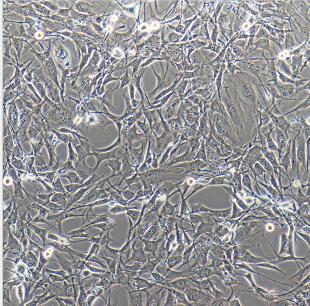| Synonyms: | I 2.1(人急性淋巴細胞白血病細胞) |
| Background: | The I 2.1 cell line is a FADD mutant of the wild-type Jurkat cell line A3 (see ATCC -CRL-2570). Wild-type A3 cells were made neomycin resistant and treated with three cycles of exposure to the frameshifting mutagen ICR-191 to isolate clones harboring recessive mutations that were resistant to killing by Fas antibody. Ref ICR-191 treated clones were serially diluted in 96-well plates in the presence of Fas Antibody for 3 to 5 weeks. Ref Two of these ICR-191 treated clones have been deposited at the ATCC . They are I 9.2 (ATCC CRL-2571), a clone with a mutation in the cysteine protease caspase-8/FLICE and I 2.1 (ATCC CRL-2572), a clone with a mutation in the adaptor FADD. |
| Species: | Homo sapiens, human |
| Disease: | acute T cell leukemia |
| Gender: | male |
| Morphology: | lymphoblast |
| Growth Mode: | suspension |
| DNA Profile: | Amelogenin: X,Y CSF1PO: 11,12 D13S317: 8,11 D16S539: 11 D5S818: 9 D7S820: 8,10 THO1: 6,9.3 TPOX: 8,10 vWA: 17,18 Cell Line Authentication Service |
| Culture Medium: | RPMI-1640+15%FBS We strongly suggest to purchase the complete medium |
| Cryopreservation medium: | 90%FBS+10%DMSO |
| Comments: | Unlike the parental line A3 that does express FADD, the I 2.1 cell line does not express FADD protein by immunoblot analysis and is completely resistant to Fas-induced death. Complementation of the I 2.1 cell lines with wild-type FADD restores Fas-mediated apoptosis. Fas activation of caspase-2, caspase-3, caspase-7, and caspase-8 is completely defective in the FADD mutant cell line I 2.1. Ref This cell line can be used to study the role of FADD in apoptotic signaling pathways in the absence of overxpression. |
我要詢價
*聯(lián)系方式:
(可以是QQ、MSN、電子郵箱、電話等,您的聯(lián)系方式不會被公開)
*內(nèi)容:









